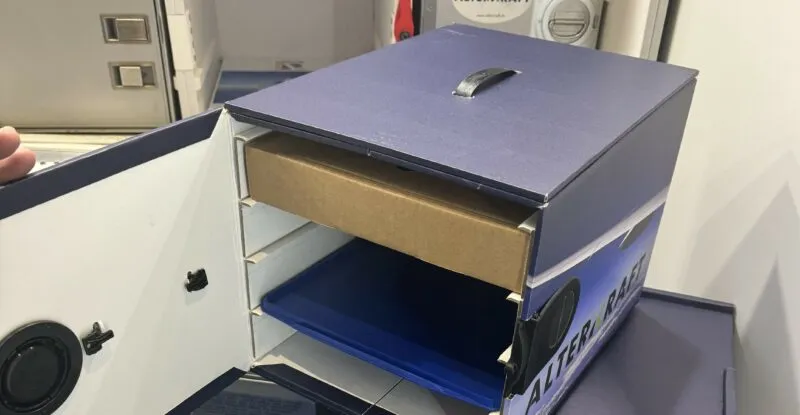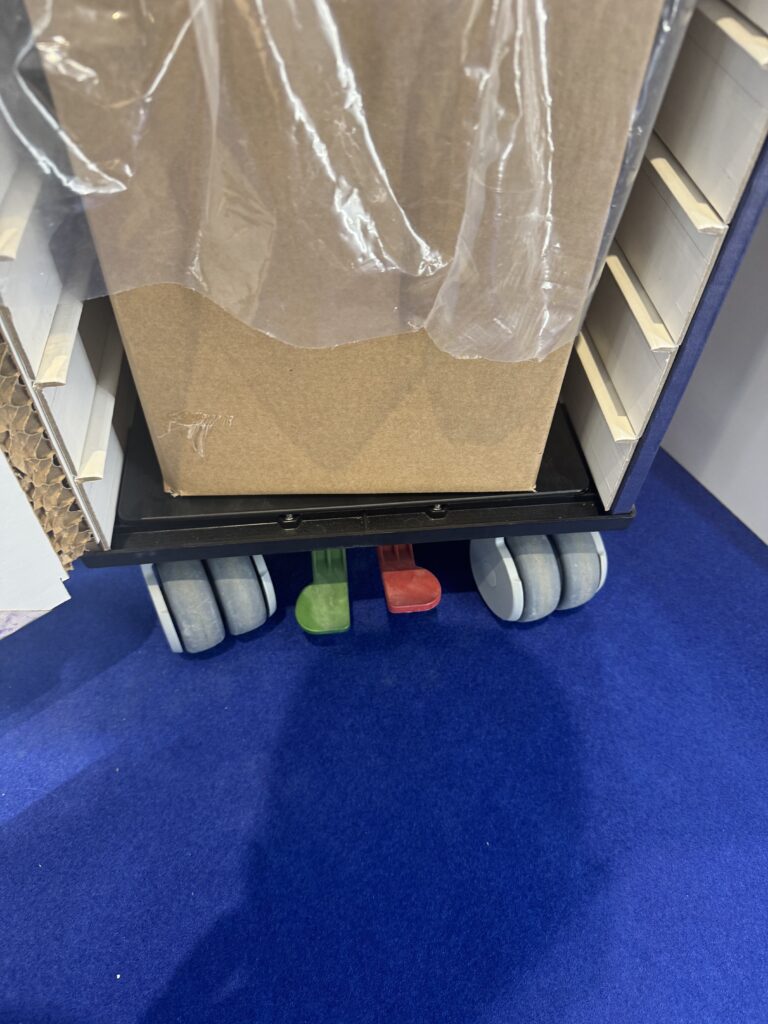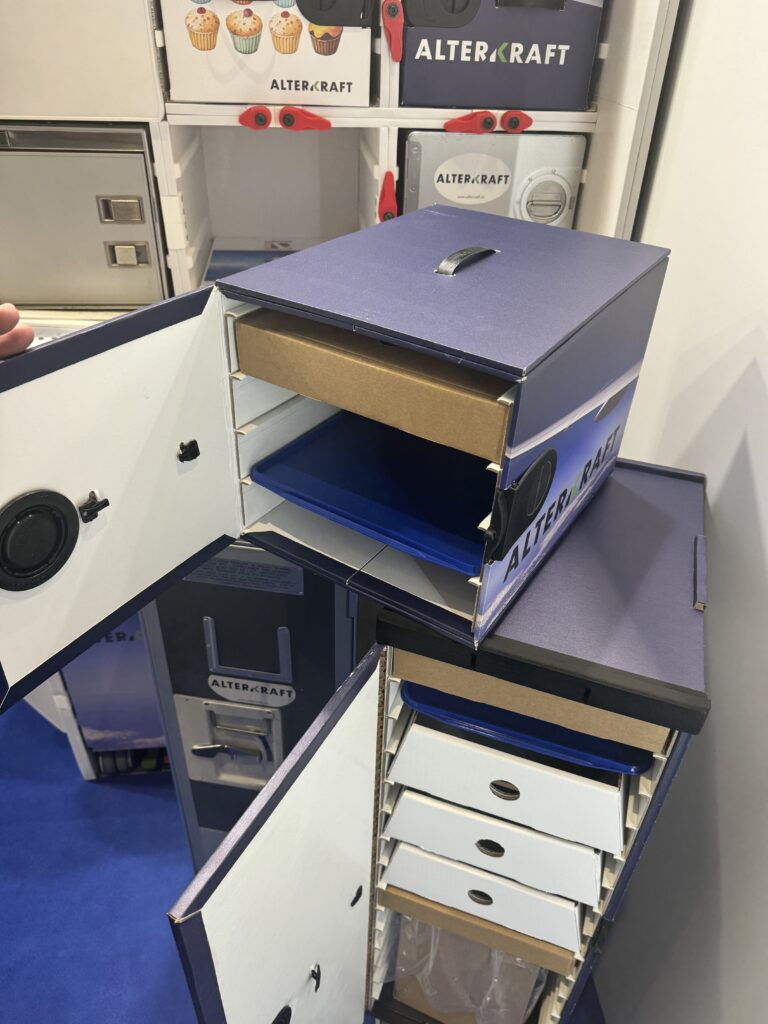 Sustainability has been at the heart of aviation innovation in recent years, with airlines focused heavily on reducing their impact on the planet to meet both passenger preferences and industry’s Net Zero targets. Reducing fuel burn and ergo emissions through weight savings is one of the most effective ways to improve aviation’s eco-credentials, but changes are often incremental.
Sustainability has been at the heart of aviation innovation in recent years, with airlines focused heavily on reducing their impact on the planet to meet both passenger preferences and industry’s Net Zero targets. Reducing fuel burn and ergo emissions through weight savings is one of the most effective ways to improve aviation’s eco-credentials, but changes are often incremental.
Not so with Alterkraft, a Swiss French company that has developed an innovative new material that can reduce the weight of onboard items like trolleys and storage boxes by up to 50%. During the Aircraft Interiors Expo in Hamburg, RGN spoke to Alterkraft managing director Philippe Tétu who outlined the company’s plans for the future.
Replacing the traditional aluminum found in trolleys, Alterkraft’s patented honeycomb cardboard can be used for the walls and inserts. The material utilises lightweight cardboard that Tétu said is structurally resilient enough to meet airline safety requirements whilst also being waterproof for galley use.
Cardboard “walls” are fitted onto a chassis that holds plastic casters on the bottom and are topped by a plastic support, giving the trolleys rigidity.
Whilst a cardboard trolley sounds like it would fold up under pressure or be very combustible, Tétu said the company this year gained the necessary certification for flight including flame resistance and 9G compatibility.
In terms of lifespan, Alterkraft estimates that the plastic tops and bottoms of the trolleys will last for the same amount of time as traditional metal ones whilst the cardboard walls will need replacing every few months. Alterkraft is examining strengthening the product to increase its longevity. The walls do not require glues or other adhesives.
RGN examined the product at AIX, and found it to be quite remarkable. The trolley itself was lightweight but felt sturdy, and the plastic additions meant it could be locked and moved around easily. It was nevertheless a curious sight to see a trolley largely made out of cardboard.
Alterkraft has examined the lifecycle of the product, and whilst the cardboard is fully recyclable, Tétu said the recycled cardboard cannot be reused for its product as the purity of the material would no longer meet safety requirements.
The material can also be applied to galley inserts — to hold dry ice, for example, in a beverage chiller. Cabin crew can move the insert around the trolley to where it is needed most. In this particular application, crew can open a perforated tab on top of the ice box which will disperse the ice without them needing to touch the inside, reducing the risk of contact burns from the ice itself.
Alterkraft is currently targeting low-cost carriers as its first customers and aims to have the product flying in regular service towards the end of 2024.
Related Articles:
- Boeing eyes using recycled aircraft carbon fibre for cabin sidewalls
- ELeather manufacturer Gen Phoenix to introduce circular dress covers
- Perfectly imperfect: Aviation explores beauty of recycled interiors
- Germany’s BDLI seeks to move the needle on cabin sustainability
- Airframers offer complementary sustainable cabin visions
- Airbus unveils 2035+ concept cabin and sustainability building blocks
- AIM Altitude to launch single-aisle version of ARCA galley at AIX
- Sustainable inflight catering gets designer update by PriestmanGoode
All images credited to the author, Fintan Horan-Stear














